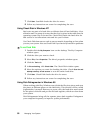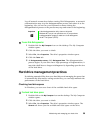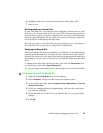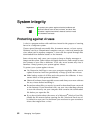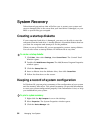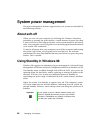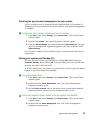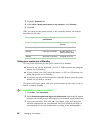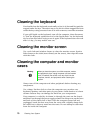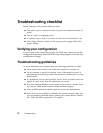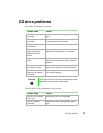
66
Managing Your System
System power management
The power-management features supported by your system are described in
the following sections.
About soft-off
When you turn off your computer by following the Windows shutdown
procedure or pressing the power button, a small amount of power (less than
5 watts) still runs to the wakeup circuitry on the system board. In this soft-off
state, your computer can still respond to an incoming signal from the modem
or to certain LAN commands.
To remove all power from your computer, turn off the computer and unplug
the power cord. When you plug the power cord back in, the network
connection LEDs may flash and the fan may start before you press the power
button. This is normal.
Using Standby in Windows 98
Windows 98 supports two standards of power management, Advanced Power
Management (APM) and Advanced Configuration and Power Interface (ACPI).
The Standby mode, available through both APM and ACPI, saves power by
spinning down the hard drive, and by reducing or turning off power to the
monitor. ACPI lets your system save additional power in Standby by
controlling the power usage of individual devices, add-in boards, and hard
drives.
When the system is in Standby, it appears to be off. The computer’s power
LED turns amber and the monitor darkens, indicating that the system has
entered Standby. However, some wakeup events can bring the system out of
Standby.
Important If your system is part of a Novell network, putting your
system in Standby disconnects you from your network
connection. Reestablish your network connection when
you take your system out of Standby.



